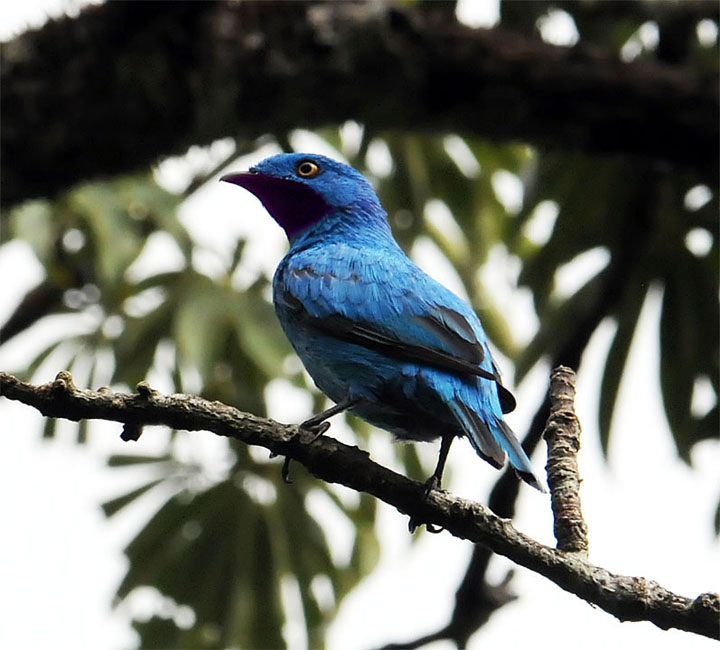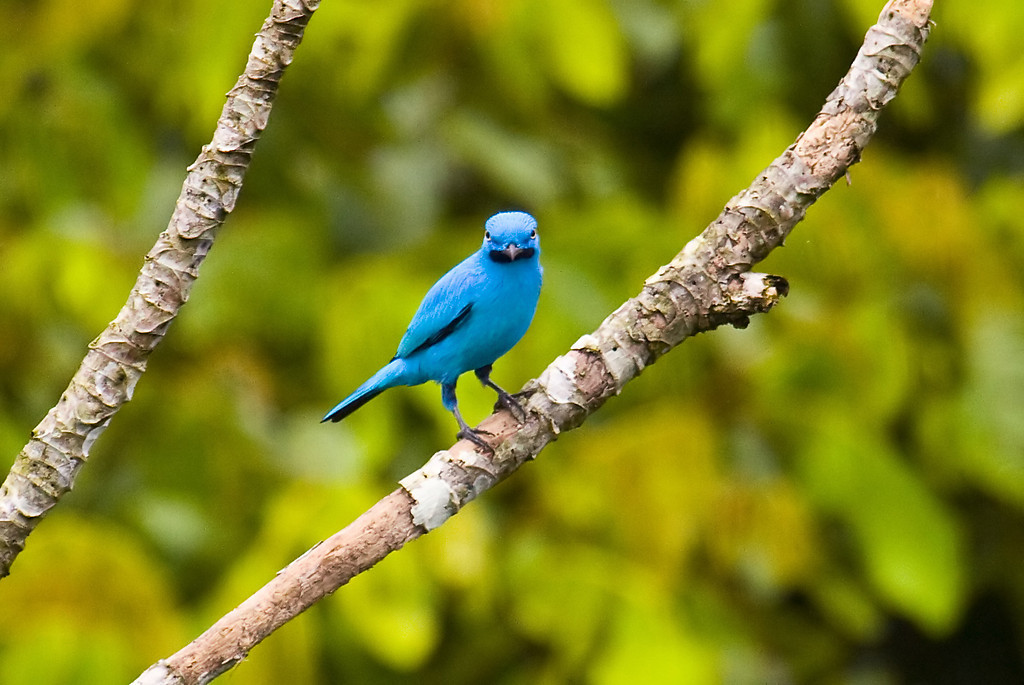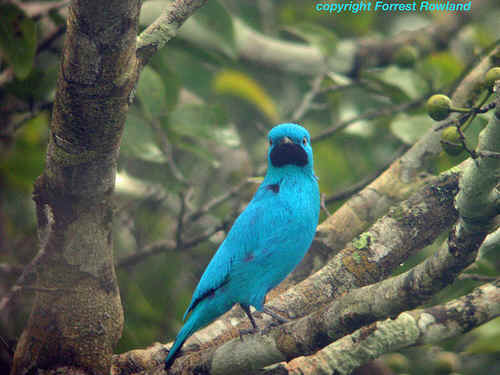
Cotinga maynana
TAXONOMY
Cotinga maynana Linnaeus, 1766.
OTHER COMMON NAMES
French: Cotinga de Maynas; German: Veilchenkehl Kotinga;
Spanish: Continga de Garganta Morada.
PHYSICAL CHARACTERISTICS
The average weight is 2.5 oz (70 g). This species is starlingsized,
and the males are predominantly blue in color, with a violet
colored throat. Their subcutaneous and perivisceral fat
often takes on the blue color of the berries they prefer.
DISTRIBUTION
This species is found in western Amazonia, from southeastern
Colombia to northern Bolivia and western Brazil. The only
species within the genus that overlaps its geographic
DISTRIBUTION
is the spangled cotinga (Cotinga cayana).
HABITAT
This species, like other members of this genus, can be found in
canopies of lowland tropical evergreen forest. In stark contrast
to other members of this genus however, the plum-throated
cotinga tends to inhabit more aqueous environs, such as
flooded forest, blackwater swamps, and river edge. Additionally,
it may be found in secondary forest. It may range up to
3,900 ft (1,200 m) in Ecuador.
BEHAVIOR
The quiet
BEHAVIOR
of the members of this genus is in contrast
with their vivid colors.
Various congeners will forage in the same tree with Plumthroated
cotingas, such as the spangled cotinga (Cotinga cayana).
Additionally, the plum-throated cotingas has been observed
foraging in the same tree with parrots (short-tailed parrots
[Graydidascalus brachyurus] and cobalt-winged parakeet [Brotogeris
cyanoptera]).
FEEDING ECOLOGY AND DIET
Fruit and berries are consumed, often “gorging” at a masting
tree or bush such as mistletoe. The fruits are often plucked on
the wing. Although the seeds of larger species (e.g., mistletoe)
might be regurgitated, smaller seeds are often swallowed. Insects
are also taken.
REPRODUCTIVE BIOLOGY
The mating system is not completely known within this group,
although for the most part it appears that males display solitarily.
The nest is platform type, often high in a tree fork, or next
to an epiphyte. The female incubates and cares for the young
alone.
CONSERVATION STATUS
Not threatened.
SIGNIFICANCE TO HUMANS
Several indigenous tribes use cotinga feathers in their ornamentation.
One of the most frequently seen groups is Cotinga,
which is commonly represented in costumes of certain Amazonian
tribes. Perhaps as many as 10–15% of artifacts have
Cotinga feathers, although the most commonly used feathers
are those of Psittacids (Ara and Amazona).
Other popular Animals
Photo Gallery of - Plum-throated cotinga




 Animalia Life
Animalia Life